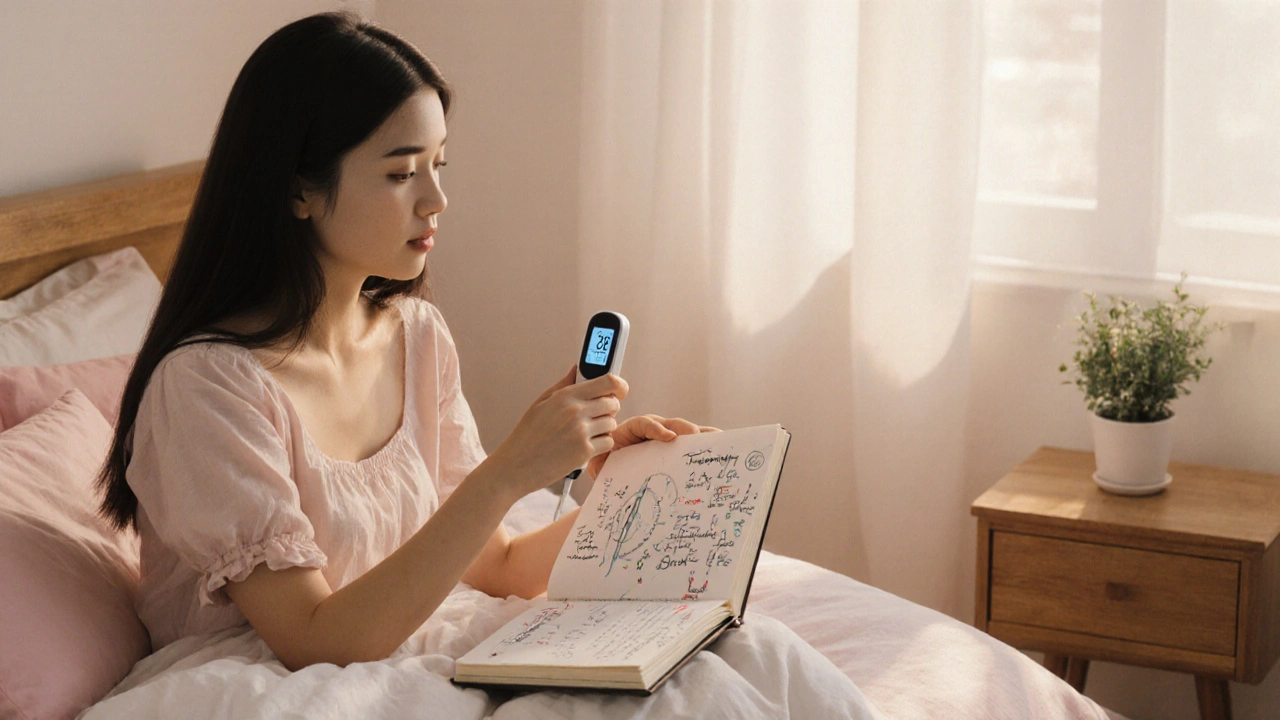LH test – praktický průvodce pro sledování ovulace
When you hear about LH test, jedná se o rychlý domácí test, který detekuje zvýšenou hladinu luteinizačního hormonu (LH) v moči. Also known as test na luteinizační hormon, it helps pinpoint the moment of ovulace without a lab visit. The LH test encompasses hormone monitoring, timing of intercourse, and planning of fertilisation attempts.
Another key player is ovulace, proces, kdy zralé vajíčko opouští vaječník a je připravené na oplodnění. Ovulace requires a surge of LH, so the test directly signals this window. Understanding ovulace influences plodnost, schopnost otěhotnět během menstruačního cyklu and guides decisions about timing intercourse or insemination.
In practice, the LH test works like this: you start testing a few days before the expected surge, usually around day 10‑12 of a 28‑day cycle. When the test strip shows two lines, that’s the LH surge – the fertile window opens for roughly 24‑36 hours. This simple rule‑of‑thumb lets you plan the most fertile days without expensive monitoring.
Jak se LH test liší od hCG testu
Many women confuse LH test with the hCG pregnancy test. The LH test measures luteinizing hormone, which peaks just before ovulation, while the hCG test detects human chorionic gonadotropin, a hormone produced after implantation. Both are gonadotropins, but they serve opposite phases: LH for ovulation, hCG for early pregnancy confirmation. Knowing the difference prevents misinterpretation of results.
When you combine the LH test with other signs – cervical mucus changes, basal body temperature rise, or ovulation pain – you get a more reliable picture of the fertile window. For example, clear, stretchy mucus often appears right after the LH surge, confirming that ovulation is imminent. This multi‑signal approach reduces the chance of a false‑negative LH strip.
For women with irregular cycles, the LH test can still be useful, but it requires a bit more observation. Tracking your cycle length for a few months helps estimate the likely day of surge. Some apps even let you log LH results alongside other symptoms, creating a personalized ovulation map.
If you’re undergoing fertility treatment, such as IVF or intrauterine insemination (IUI), the LH test can guide the timing of medication triggers. Doctors often prescribe a “hCG trigger” to induce ovulation, but the natural LH surge can still be measured to confirm the response. In this context, the test is a cheap adjunct to professional monitoring.
Finally, remember that lifestyle factors can affect LH levels. Stress, intense exercise, or sudden weight changes may blunt the surge, leading to a weaker test line. Maintaining a balanced routine, adequate sleep, and moderate activity helps keep hormonal rhythms stable.
Below you’ll find articles that dive deeper into each of these topics – from interpreting LH strips to combining them with other fertility tools, and from dealing with irregular cycles to preparing for medical procedures. Use the guide to choose the right approach for your body and your family‑planning goals.
Jak zjistit, že nemáte ovulaci - příznaky, testy a další kroky
Zjistěte, jak rozpoznat anovulaci, které příznaky na ni ukazují, jaké testy použít a co dělat, když ovulace chybí.

